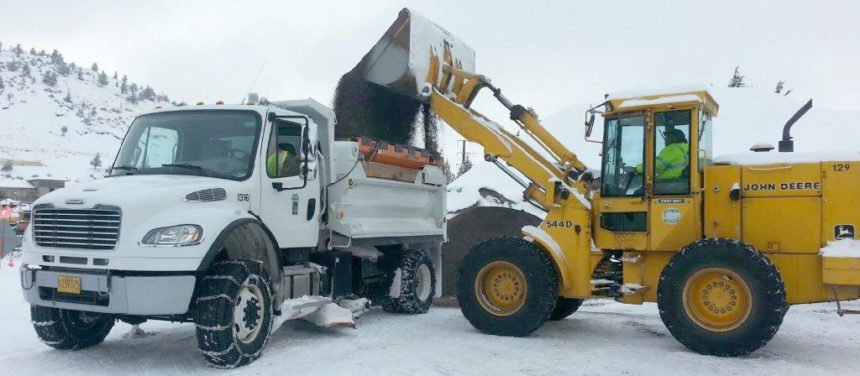City of Bend outlines ’emergency snow zone’ plans

Could tow cars from some streets, if need be - but there won't be a tow bill
BEND, Ore. (KTVZ) -- The city of Bend on Thursday outlined its emergency snow removal plan for the coming winter, including a return of last year's "emergency snow zones" that could lead to removal of cars, after advance notice -- but no bill for that tow, if so.
Here's the city news release, plus some additional information:
Everyone has a responsibility to prepare for winter. That means getting resources and supplies lined up before the big storm hits. Learn what to expect and get information about street plowing, sidewalk shoveling and protecting homes at www.bendoregon.gov/winter.
The Streets and Operations Department has a plan for winter street operations, including how crews prioritize streets to plow and sand, handle driveways and deal with certain problematic streets where on-street parking during particularly heavy snowfall has contributed to increasingly narrow and sometimes impassable roads. These are called “emergency snow zones.”
As part of a pilot project, during declared snow emergencies, the city will ask that “emergency snow zone” marked streets be cleared of parked cars, to help us plow from curb to curb. Areas are:
- Wall Street (Portland Avenue to Colorado Avenue)
- Bond Street (Wall Street to Colorado Avenue)
- Chandler Avenue (Mt. Washington Drive to Century Drive)
- NE Courtney Drive (27th Street to Conners Avenue)
- NE Conners Avenue (27th Street to Courtney Drive)
- NW Broadway Street (Franklin Avenue / Riverside Boulevard to Colorado Avenue)
- NW Tumalo Avenue (Riverside Boulevard to Broadway Street)
- 17th Street & Troon Avenue (Galveston Avenue to Mt. Washington Drive)
The maps of those areas can be found at https://www.bendoregon.gov/government/departments/streets/street-operations/winter.
If Bend gets a big snow storm, city officials said they will consider many factors, including weather forecasts and time of day, in the decision to declare a “snow emergency,” which means parking will not be allowed on these streets during an identified period of 12 hours or until the street has been cleared curb to curb.
The city will distribute a news release declaring a snow emergency and identify the 12-hour period for parking restrictions and send out e-notifications to those who subscribe to the notifications. To receive emergency snow notifications via email, sign up at www.bendoregon.gov/enews.
During a big storm, check the banner on the front of www.bendoregon.gov or call Streets and Operations: 541-323-5980.
The city said it will plow the emergency snow zone streets listed during the identified 12 hours. Once the street has been completely plowed from curb to curb, cars can return to the zone. Work is expected to be done at night in the downtown area.
As this is still a pilot program, the city doesn’t intend to tow cars, but if the city does have to tow to facilitate safe streets, it will be at no cost to the driver. Those looking for a car that is not where it was parked it during a snow emergency should call Consolidated Towing 541-389-8080 to find out where their car is.
When it snows, everyone – whether it’s an emergency snow zone or not - can help the Streets and Operations Department plow curb-to-curb by trying to keep streets clear of obstacles such as parked vehicles or garbage cans or basketball hoops.
“Do your neighbors a favor: Don’t get plowed around,” said Streets and Operations Department Director David Abbas. “Plowing around parked cars can end up leaving a berm that would be difficult for a person with a shovel to remove.”
Abbas told NewsChannel 21 the “snow emergency zones” are the same as last year, except for Portland Avenue, which was removed due to some parking changes.
He also explained why a snow emergency wasn’t declared in late February or March. amid very heavy snowfall.
“We did not call the snow emergency last year for these zones as that particular storm, hitting us with 2+ feet of snow if a short amount of time, had all of town in need of plowing,” he said.
“I didn’t want to pull staff from the other areas in town (priority one routes), to go do these seven roads,” he said. “I kept the forces out throughout town, trying to keep up with all the Priority 1 and 2 routes. These are the main travel ways through town, arterials and collectors, school areas, hospital area, business center, etc.”